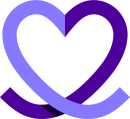As early as the 1950s, Northwestern Mutual Life brought together members of its actuarial, financial and other departments to study the application of computers to its business. According to Inc., the insurance company subsequently leveraged the ensuing efficiencies to become a celebrated example of tech savvy by the 1980s.
These were the precursors to modern cross-functional teams. In the same sense that a modern product team might embed designers alongside engineers, product managers and other team members outside the scope of a rigidly-delineated departmental structure, Northwestern Mutual brought together these hybridized teams to accomplish goals that went beyond the scope of any preexisting department.
By the 2000s, the cross-functional approach had spread well beyond the financial industry.
In 2003, a study published in the Journal of Product Innovation Management found positive statistical correlations between a cross-functional structure and team members’ effort, job involvement and willingness to entertain different opinions. The study, “Technical Professionals in Cross-functional Teams: Their Quality of Work Life” by Cordero, Ferris and DiTomaso, concluded: “working on cross-functional teams appears to increase the quality of work life for the technical professionals.” And as recently as 2019, a Deloitte Global Capital Trends survey echoed the sentiment. It reported that 53 percent of participants transitioning to a cross-functional, team-based organization saw significant improvements in performance.
Though by no means a silver bullet, organizations can realize a number of efficiencies by adopting a cross-functional approach. Statistics may bear them out, but what do those efficiencies look like to the team members involved on a personal level?
Built In San Francisco spoke to three design leaders to learn more about the challenges and advantages of working while embedded in cross-functional teams.
Artium is a software consultancy offering engineering, product, design and talent work. The company helps its client partners create software, learn and adopt best practices and methodologies, create a culture of successful collaboration.
What do organizations have to gain by embedding designers on cross-functional teams rather than keeping them within a single, centralized design team?
Most designers will never gain enough knowledge to do great design for a product that they have to understand at both 30,000-foot and microscopic levels. Product designers need to be simultaneously thinking about their craft as a function while also thinking about their design execution in regards to a particular product’s considerations on a business, a technical and a user level.
Just because a product designer sits on a cross-functional team does not mean they are not also part of a larger design organization. One does not preclude the other. An engineer is part of a larger engineering organization while also being on a pod with its own subset of concerns. It’s no different for design.
This balanced pod structure is considered a best practice at Artium because it allows us to abstract and reduce complexity away from individual contributors on the ground executing. A product squad focused on a subset of features knows enough to get things done, but they don’t have to know everything about the broader picture and larger roadmap.
How do you avoid becoming siloed off from the other designers at Atrium? What does knowledge-sharing, collaboration and feedback look like among this group?
I first want to address that being siloed off is inevitable. Especially in a consulting atmosphere, we have different clients, regions and concerns. However, we all respect one another as product designers and support each other in any way we can.
Whenever I get stuck, I never hesitate to pull in other people. This collaboration style works because each designer, despite the clients we may be on, still possesses a desire to collaborate. We all see the inherent value in being involved in each other’s work and creating the space to collaborate and reflect while pushing the craft of product design forward.
We have tried to hire people who want to pair with other designers, so this isn’t something we have to enforce. It’s something the designers at Artium want to do.
Whenever I get stuck, I never hesitate to pull in other people.”
How does a designer’s average workday change when they are embedded with product managers, engineers and others rather than working in a centralized design or UX team?
The honest answer is that it doesn’t. In tech, you don’t have design, product or engineering teams that truly function in a centralized way. That said, some complexity exists because we are all on different client work and embedded within these organizations.
We gain a massive advantage from doing this kind of consulting work. I think great designers get bored facing the same problems repeatedly. It is astonishing to see our designers’ impact as individuals across many large organizations and hot startups.
For example, since I started at Artium two years ago, I have worked on a dashboard to greenlight movies that completely changed how a major motion picture studio makes decisions. I have created a social dating app for TikTok that was the first to use their new API; I have revamped a Fortune 100 company’s design system across all 16 companies they own; and I have designed a version control solution aimed at game developers that included both desktop and web apps.
Everybody wants to be able to have the opportunity to do that breadth of work. That’s what embedding on teams with product managers and developers in a consulting organization can do for you. Artium offers the ability to work on complex problems that only scale can bring while not giving up the ability to work on really cool tech startup launches.
Digital services firm West Monroe’s multidisciplinary teams blend management consulting, digital design and product engineering to help client companies move from traditional ways of working to digital operating models.
What do organizations have to gain by embedding designers on cross-functional teams rather than keeping them within a single, centralized design team?
By decreasing the use of time and resources and increasing innovation.
Design processes require ample time and resources to craft presentations for internal approval. However, the ultimate stakeholder is the customer, so focusing design energy on the customer experience and iterating to make that experience smoother is a better use of time and resources. Today’s sector-disrupting products are made by delivering the most value to the market in the shortest amount of time. Having a cross-functional team engaged in a tight build-measure-learn feedback loop optimizes for this style of delivery.
Take our work helping a now billion-dollar educational technology company. We helped them create the first version of their product. From day one, our designer and lead engineer sketched out a user flow, selected a component library and began pairing on delivery — often working side by side. This resulted in a four-week time to alpha testers in market for rapid feedback from actual users, followed by continuous enhancements over the next nine months — with virtually zero wasted effort designing features that might never get built and used.
How do you avoid becoming siloed off from the other designers at West Monroe? What does knowledge-sharing, collaboration and feedback look like among this group?
To combat this sort of siloing, I recommend organizations support a design studio culture, providing space and time for designers to come together to share their work, insights and approaches. The space should be low ego and psychologically safe, a place where every designer on the team can present work in progress, receive and give constructive feedback, share the latest tools and techniques and work to maintain consistency across all of the products in their organization.
Designers should be included in every aspect of the product development process.”
How does a designer’s average workday change when they are embedded with product managers, engineers and others, rather than working in a centralized design or UX team?
Designers should be included in every aspect of the product development process — from project kickoffs to sprint planning to daily standups and retrospectives. They should have consistent access to users and customer feedback and analytics. And they should partner closely with the product managers and business stakeholders to understand the North Star metrics as well as the nuances in priorities and constraints. Designers should also feel free to submit their own ideas as stories in the backlog or tag a story as “needs design” or “pair with design” to increase the product’s quality and optimize throughput.

Mixbook’s online photo editing platform allows users to edit and personalize photographs and create photo books, cards, calendars, home decor and more using hundreds of themes and templates.
What do organizations have to gain by embedding designers on cross-functional teams rather than keeping them within a single, centralized design team?
Designers are able to focus on the specific needs of their domain areas and become invested in the overall success of the team’s efforts. While individual designers become influential subject matter experts within their domains, the company benefits from highly sophisticated solutions that can only come from deep study, research and continuous iteration.
How do you avoid becoming siloed off from the other designers at Mixbook? What does knowledge-sharing, collaboration and feedback look like among this group?
Constant connection and communication is the key. We hold weekly design meetings where each designer provides updates about shifting priorities from their respective areas. We review solutions as a collective braintrust and all share feedback and best practices about our processes.
Discovery workshops are a great way to collaborate laterally outside of their responsibilities while leveraging diverse thinking. Tactically, we rely heavily on collaborative design tools and messaging channels for real-time flow of communication. As the product design team lead, I meet with each designer twice a week to advise on design strategy and work through solutions.
Constant connection and communication is the key.”
How does a designer’s average workday change when they are embedded with product managers, engineers and others, rather than working in a centralized design or UX team?
As one of the three key roles of a product squad, which includes product management, design and engineering, product designers spend more time interacting with their squad members rather than the product design team. These frequent interactions could include daily standups, weekly product team meetings and ad hoc topical meetings. Since they are included in the inner circle of trust and communication within their domain, there is far less reaching out to get information and more “being on the pulse” of current status and what’s ahead.













